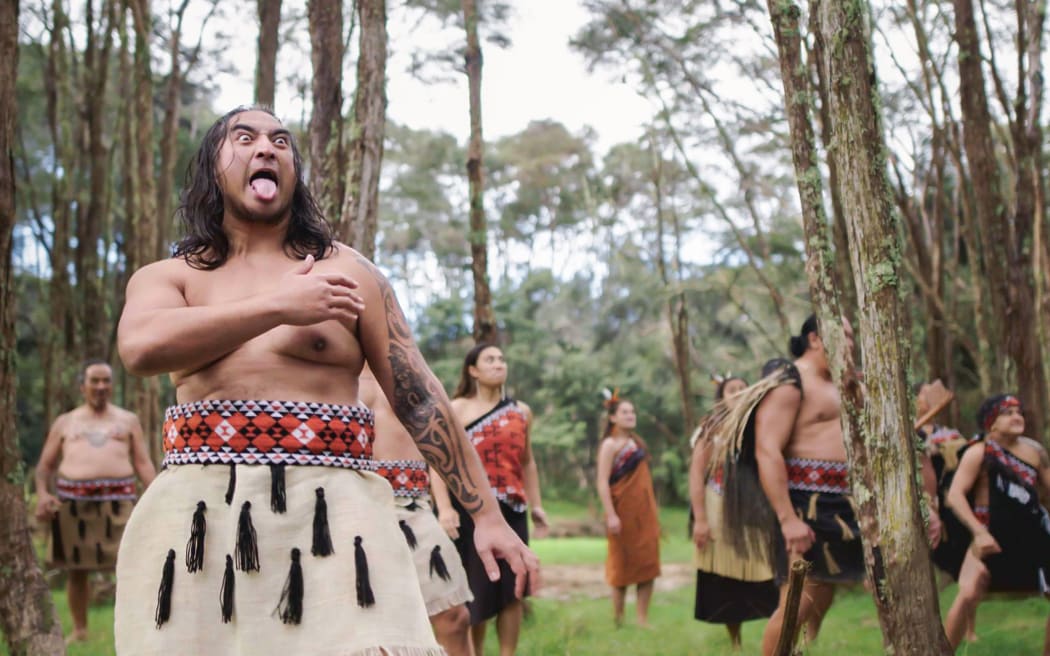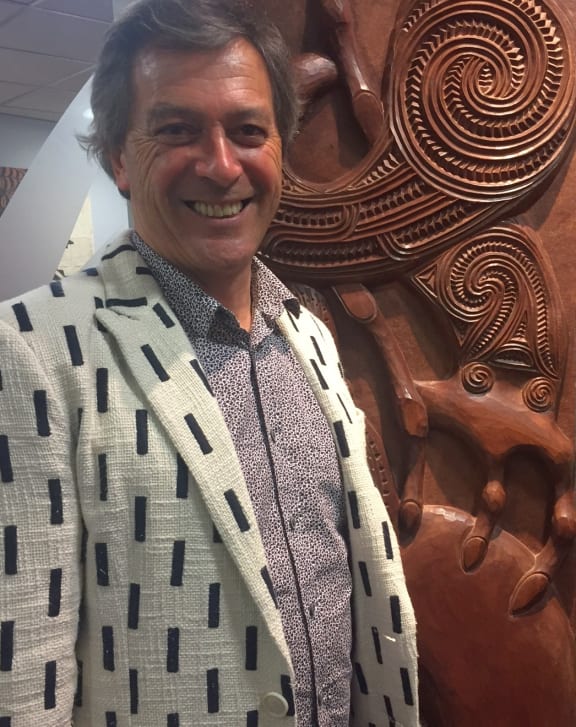Ian Taylor is one of this country's great inventors and runs a world-leading graphics company, Animation Research Limited. Recently, his focus has been bringing an often overlooked part of our history to life - the New Zealand Wars.
His company is behind the animation in RNZ's special online series Stories of Ruapekapeka, a project that he feels very passionate about.

Photo: RNZ / Great Southern Television
Growing up in the small Hawke's Bay settlement of Raupunga in the 1950s as the son of a Pakeha father and Māori mother, Mr Taylor says he - like many others of his generation - was not educated about Māori history. Instead he was sent to Catholic boarding school to learn "the Pakeha way."
"We weren't taught about the fact that our ancestors travelled across a third of the planet to get here using stars to navigate. They were designers, they were engineers, they were astrologers, astronomers, scientists," he says.
""All of that stuff is in Māori and Pasifika DNA, and yet it was denied our kids in school."
His mother and aunties would speak fluent Māori to each other, but would not speak te reo to the children.

Sir Ian Taylor. Photo: RNZ
Taylor says that while his parents believed they were doing the right thing by educating him through a European lens, the tide needs to change for future generations - especially with the approaching 250th anniversary of Captain Cook's landing in New Zealand.
"In the Māori worldview, our past lies in front of us. So the footsteps we lay down in the past are the paving stones we stand on today," he says.
"So if we use 2019, and look out at the 250 years of footsteps we've created, look out at the paving stones today and ask this question: Is there an indigenous race on the planet that's in a better position than we are? Name one.
"Think of that sail coming over the horizon again, and knowing what we know now. And one of the things we know now is that we denied our Māori and Pasifika kids their culture, a culture that was incredibly powerful."
The Story of Ruapekapeka is a particularly apt slice of Māori history in this context, as it demonstrates the innovation and creativity of Māori people, Taylor says.
The Ruapekapeka pā - or 'the bat's nest' - was an extremely sophisticated fortress constructed by Māori warriors over the course of 10 months.
The pa was comprised of an intricate system of tunnels and purpose built bomb shelters that protected Māori from attack by British forces during the 1846 battle, which was the final clash in The Northland War.
"The story of Ruapekapeka is one small step to share with our kids, with the country, the fact that the British army got their butts kicked for the first time anywhere in the world, by these natives. These really innovative, clever natives - indigenous people of this land - who built this fortress that they found really next to impossible to invade," Taylor says.
The British armies had never come up against a garrison as complex as Ruapekapeka before anywhere in the world, and they took the lessons learned in the battle and used them in the trenches during the World War I.
Taylor says it's time for everybody to understand this innovation.
"How differently might we look at Māori today knowing that we were up there with the Vikings, we were up there with the Romans?"

